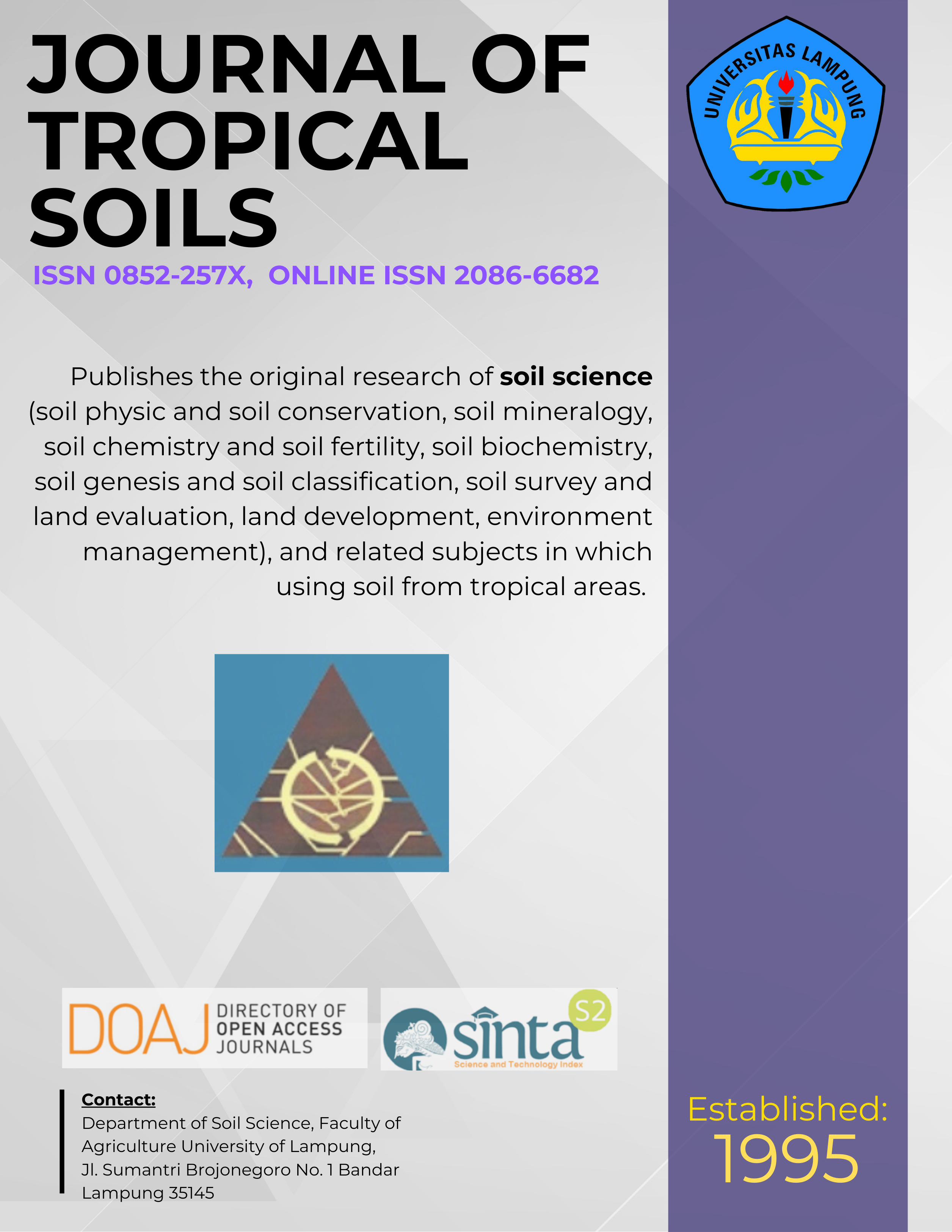Effect of Organic Matter Amendment on Lead Contamination in Roadside Soil and Plant
Main Article Content
Abstract
Lad Contamination in Roadside Soil and Plant and Effect of Organic Matter Amendment (Sabaruddin, D Budianta and Mardia): Roadside soils and plants may be the most important sink of lead (Pb). It has been widely known that soil organic matter (SOM) plays important roles in determining concentrations of metals in soil solution and their extractability from the soil. To investigate Pb contamination in the roadside soils and plants, as well as the effect of organic matter (OM) on the soluble Pb in the roadside soils, surface soils (0 to 20 cm) were collected from a busy road.  The soils were incubated for 4 weeks under room temperature after being treated with 0, 30, 60 and 90 Mg ha-1 of OM. Leaves of oil palms (Elaeis guineensis) planted on the roadside were also analyzed for Pb content. Current study revealed that Pb content in roadside soils and leaves of oil palm was 1.5 and 5.5 times higher than the safe level of Pb in soil and plant. It confirms that both soil and plant at the study site were contaminated by Pb. Current study also showed that SOM amendment significantly (P<0.01) affected soluble Pb content in the soils. Adding OM to the soil at 30 Mg ha-1 to correct the level of SOC from very low to low was sufficient to significantly reduce soluble Pb in the soils. However, the application of 60 Mg ha-1 of OM triggered the increases in soluble Pb in the soils. Further increases in OM application to 90 Mg ha-1 resulted in significant increases in soluble Pb as compared with that in the soil receiving 30 Mg ha-1 of OM. In spite of the increases, the level of soluble Pb in the soils receiving 60 and 90 Mg ha-1 of OM was still much below the safe level of Pb in soil.
Downloads
Article Details
Section
License for Authors
Authors who publish with this journal agree to the following terms:
- Authors retain copyright and grant the journal right of first publication with the work simultaneously licensed under a Creative Commons Attribution License that allows others to share the work with an acknowledgement of the work's authorship and initial publication in this journal.
- Authors are able to enter into separate, additional contractual arrangements for the non-exclusive distribution of the journal's published version of the work (e.g., post it to an institutional repository or publish it in a book), with an acknowledgement of its initial publication in this journal.
- Authors are permitted and encouraged to post their work online (e.g., in institutional repositories or on their website) prior to and during the submission process, as it can lead to productive exchanges, as well as earlier and greater citation of published work (See The Effect of Open Access).
License for Regular Users
Other regular users who want to cite, distribute, remix, tweak, and build upon author’s works, even for commercial purposes, should acknowledge the work’s authorship and initial publication in this journal, licensed under a Creative Commons Attribution License.

